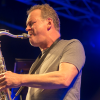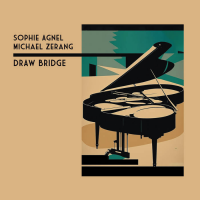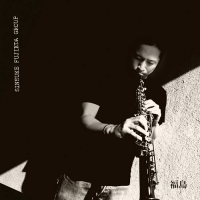Home » Jazz Articles » Album Review » Karl Seglem: urbs
Karl Seglem: urbs
Of course there are those who'd simply say that what Seglem—an equally accomplished tenor saxophonist- -does is not jazz. And it may well not be—certainly not by traditionalist definition. But the real question is: does it matter? Seglem's previous release, New North (Ozella, 2004), bore a closer resemblance to the expansionist jazz-centricities of fellow countrymen including Jan Garbarek and Nils Petter Molvær, the latter a guest on that disc. As intriguing an album as New North was, with its core group and wealth of guest appearances, urbs benefits from a consistent line-up and, like many of his fellow Norwegians, a world view that transcends the boundaries of his Scandinavian home.
The title track combines drummer Helge Norbakken's booty shaking Afrobeat, guitarist Olav Torget's metal- edged distortion, co-producer Reidar Skar's live electronics and Seglem's goat horn—so heavily processed, at times, that it becomes something else entirely. The Afro-centricity continues on "Morenelys," with Seglem switching to tenor sax, but when Håkon Høgemo joins in with his Hardanger fiddle—which combines a four-string bowed violin with additional sympathetic resonating strings—its simple melody pulls the music towards a roots sound, drawing an unmistakable link between the traditional folk music of the Norwegians, Celts and Persians.
Electronica beats may drive "Fossil," the album's longest track, but Seglem's melodies further link middle Eastern music with Norway, especially through Torget's use of the oud-like baglava, in addition to his atmospheric electric guitar work. Gjermund Silset's fretless electric bass and, at times, ethereal atmospherics recall Jan Garbarek albums like Paths, Prints (ECM, 1982) and Wayfarer (ECM, 1983), but Norbakken's relentless acoustic and electronic percussion places a more modern spin on the group's referencing of archaic cultural sources.
Garbarek's attention to tone and the purity of every note informs Seglem, though Seglem possesses a warmer tenor tone. While solo opportunities exist, Seglem's writing is often so predisposed to song form that it would be easy to imagine this music being reworked for a vocalist, territory he explored, in fact, on New North.
Think the textures and lyricism of Garbarek's Visible World (ECM, 1996) combined with the modernistic beats, samples and electronics of Nils Petter Molvær's Khmer (ECM, 1997). Add the unique sound of Seglem's often-times processed goat horns and group instrumentation capable of evoking feelings ancient and futuristic—often at the same time—and you've found the unique nexus point where Seglem and his group live on urbs.
Track Listing
urbs; Morenelys; Digeldans (halling); Vridd; Rudlande; Over Oslo; Nye Nord; Folketone; Fossil; Synsrand.
Personnel
Karl Seglem: tenor saxophone, goat horns, electronics; Håkon Høgemo: Hardanger fiddle; Gjermund Silset: electric bass, electric guitar; Olav Torget: acoustic and electric guitars, ngoni, baglava; Helge Norbakken: drums, percussion.
Album information
Title: urbs | Year Released: 2008 | Record Label: Ozella Music
Tags
PREVIOUS / NEXT
Support All About Jazz
 All About Jazz has been a pillar of jazz since 1995, championing it as an art form and, more importantly, supporting the musicians who make it. Our enduring commitment has made "AAJ" one of the most culturally important websites of its kind, read by hundreds of thousands of fans, musicians and industry figures every month.
All About Jazz has been a pillar of jazz since 1995, championing it as an art form and, more importantly, supporting the musicians who make it. Our enduring commitment has made "AAJ" one of the most culturally important websites of its kind, read by hundreds of thousands of fans, musicians and industry figures every month.

















